It should be easy to addapt the following code to fixed point. It employs a rational approximation to calculate the arctangent normalized to the [0 1) interval (you can multiply it by Pi/2 to get the real arctangent). Then, you can use well known identities to get the arcsin/arccos from the arctangent.
normalized_atan(x) ~ (b x + x^2) / (1 + 2 b x + x^2)
where b = 0.596227
The maximum error is 0.1620º
#include <stdint.h>
#include <math.h>
// Approximates atan(x) normalized to the [-1,1] range
// with a maximum error of 0.1620 degrees.
float norm_atan( float x )
{
static const uint32_t sign_mask = 0x80000000;
static const float b = 0.596227f;
// Extract the sign bit
uint32_t ux_s = sign_mask & (uint32_t &)x;
// Calculate the arctangent in the first quadrant
float bx_a = ::fabs( b * x );
float num = bx_a + x * x;
float atan_1q = num / ( 1.f + bx_a + num );
// Restore the sign bit
uint32_t atan_2q = ux_s | (uint32_t &)atan_1q;
return (float &)atan_2q;
}
// Approximates atan2(y, x) normalized to the [0,4) range
// with a maximum error of 0.1620 degrees
float norm_atan2( float y, float x )
{
static const uint32_t sign_mask = 0x80000000;
static const float b = 0.596227f;
// Extract the sign bits
uint32_t ux_s = sign_mask & (uint32_t &)x;
uint32_t uy_s = sign_mask & (uint32_t &)y;
// Determine the quadrant offset
float q = (float)( ( ~ux_s & uy_s ) >> 29 | ux_s >> 30 );
// Calculate the arctangent in the first quadrant
float bxy_a = ::fabs( b * x * y );
float num = bxy_a + y * y;
float atan_1q = num / ( x * x + bxy_a + num );
// Translate it to the proper quadrant
uint32_t uatan_2q = (ux_s ^ uy_s) | (uint32_t &)atan_1q;
return q + (float &)uatan_2q;
}
In case you need more precision, there is a 3rd order rational function:
normalized_atan(x) ~ ( c x + x^2 + x^3) / ( 1 + (c + 1) x + (c + 1) x^2 + x^3)
where c = (1 + sqrt(17)) / 8
which has a maximum approximation error of 0.00811º

